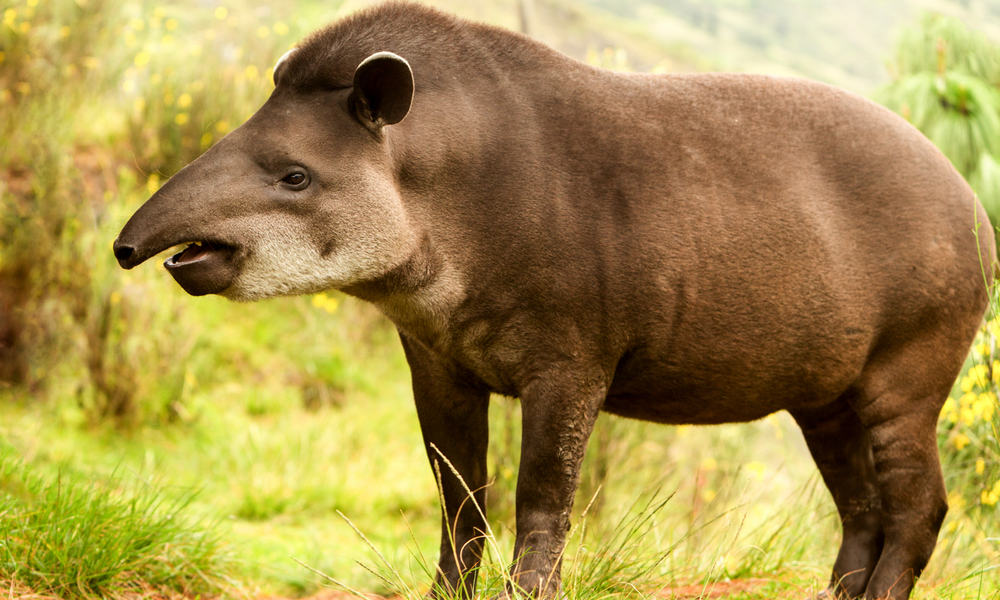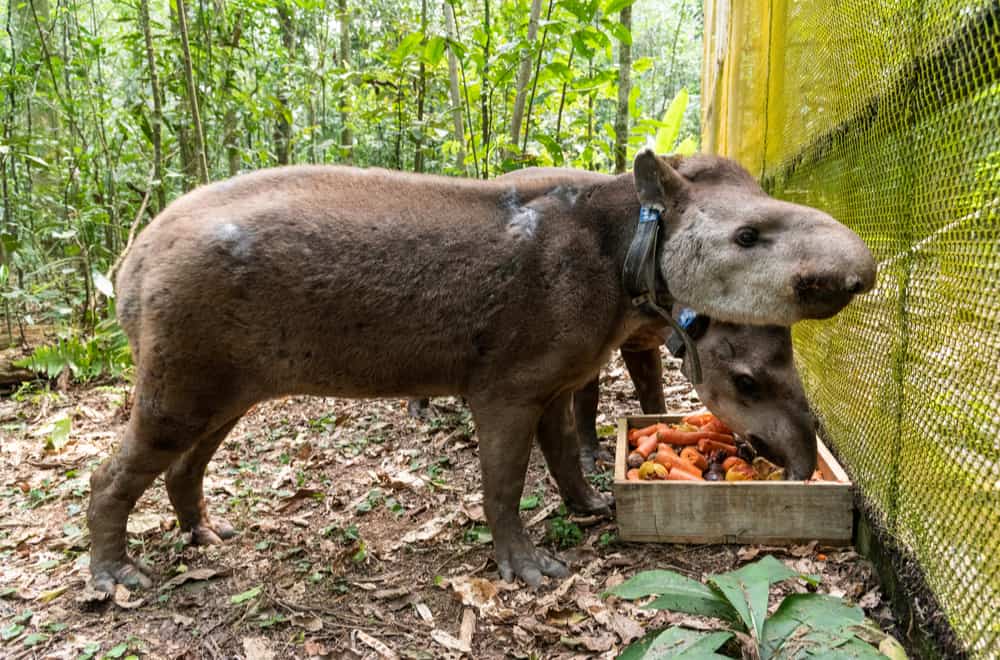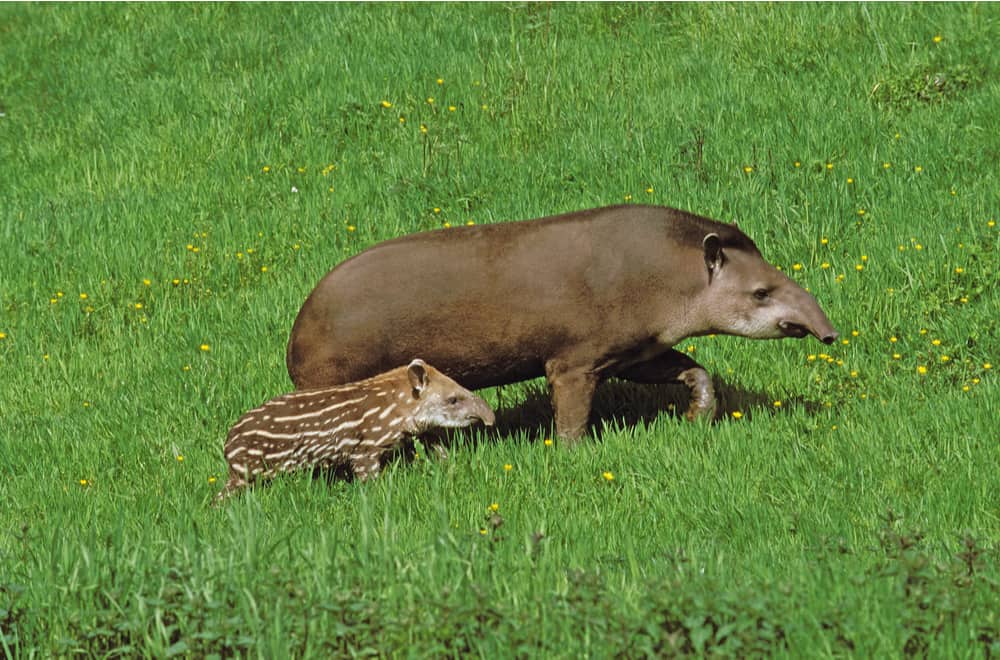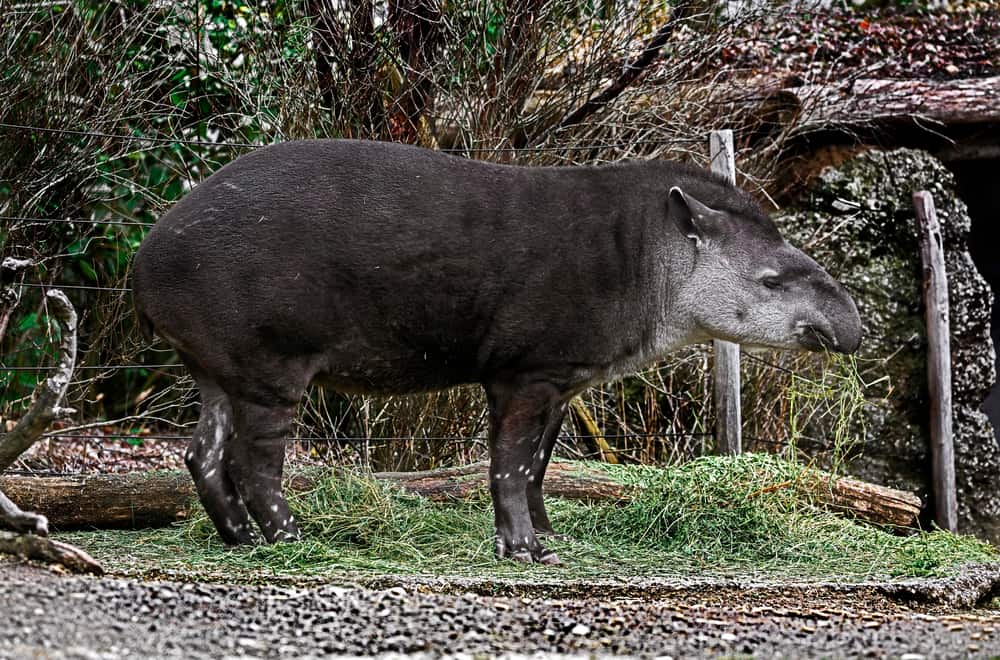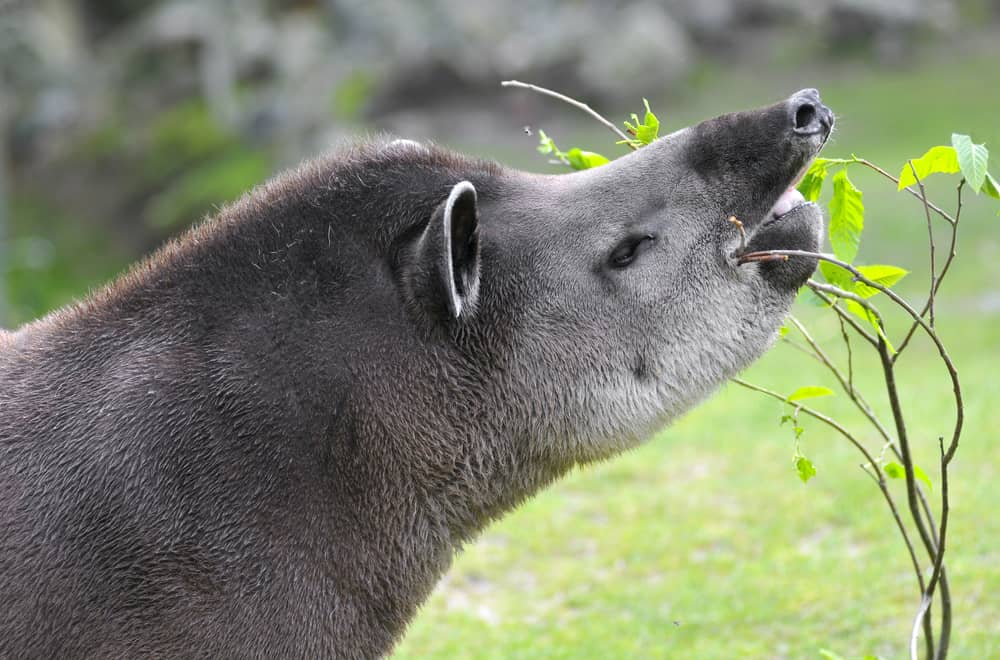Due to habitat loss and excessive poaching, tapirs that have lived on this Earth for more than 30 million years, with fossils records found dating back to 65.6 million years ago, are considered endangered today.
Tapirs are one of the few species with such an excellent evolutionary history, and it is obvious for one to be interested to find out more about them.
So, if you’re wondering what these animals feed on to survive or just their basic feeding nature, you’re at the right place! Bonus – we’ll also discuss extant tapir species and their habitat in detail. We can’t wait any longer. Let’s begin!
What Does A Tapir Eat?
Tapirs are herbivores, i.e., they do not eat meat, nor do they predate on other animals for survival. Below are a few food items that constitute a tapir’s diet.
1. Fruits and berries
Tapirs love fruits and berries and spend most of their time foraging for these delicacies. These animals are frugivorous and actively search for fruits. They enjoy eating Bromalides and its berries.
When other types of fruits are not available, for instance, during the dry seasons, tapirs, especially Lowland tapirs, feast on palm fruits.
Malayan tapirs of Thailand were found to feed on fruits quite impressively. Their diet was found to consist of 8.1% of fruits.
2. Twigs and leaves of shrubs and trees
Like any other herbivores, a major portion of a tapir’s diet constitutes herbs, shrubs, and leaves of trees. They enjoy feeding on the ferns, horsetails, and leaves of tropical trees.
In a study based in Malaysia, Malayan tapirs were found to feed on plants of 115 species from 70 genera and 40 families. Plants from Rubiaceae and Euphorbiaceae were found to constitute above 40% of their diet.
3. Grasses
Grasses are another herbivore diet staple. Tapirs are grazers and use their incisor teeth, like horses, to bite grasses off the ground.
4. Aquatic plants
Tapirs spend a lot of time cooling themselves in the water bodies and washing off parasites from their skin. Side by side, they equally enjoy relishing aquatic plants.
Tapirs know how to swim, and many believe that they walk along the river bottoms like hippos. Besides feeding purposes, tapirs also use water as their hiding places when predators are nearby.
What Do Baby Tapir Eat?
Female tapirs are pregnant for around 13 months before giving birth. They only give birth to one young at a time, called a calf. Baby tapirs have whitish-yellowish patches and stripes on their body to act as camouflage during their initial few months.
Tapir calves relish their mother’s milk as long as it is available to them. It is generally until the mother gives birth to her young. Tapir babies wean around 6 months of age and graze alongside their parents in small groups. Calves are considered sexually mature adult tapirs around 3 to 4 years.
How Do Tapirs Eat?
Tapirs use their muscular proboscis to catch their food and insert it into the mouth. Though the snout is not as long and flexible as that of elephants’, it serves the purpose. These species are mostly crepuscular and nocturnal and are known to forage and eat 75 to 80 lbs of food per night.
Tapirs are known to eat their forage despite any hindrances, such as thorns and insects, and their favorite fruit is bananas. Big-sized tapirs, when they stand on their hind legs, can reach up to 3 meters with their proboscis.
Also, tapirs are often witnessed to go around salt licks, where natural salt deposits are found, in order to search for some essential minerals.
Hindgut Fermentation in Tapirs
Tapirs have a long digestive period which ranges from 4 to up to 23 days. Plant materials are high in fibers and aren’t easy to digest.
It is why many herbivores such as elephants, horses, tapirs, and many more have evolved a specialized digestive mechanism. The phenomenon is called hindgut fermentation.
Humans cannot digest cellulose, a substance abundant in plants. But neither can herbivores like tapirs. However, they have symbiotic bacteria in their gut that help them break down this compound, making it easier for them to digest. This microbial fermentation takes place in the large intestine and caecum.
Tapirs have enlarged caecum. In the case of the regular digestive system, once food passes through the intestine, the nutritions are already absorbed, and the remnants are passed onto the colon.
However, most hindgut fermenters are able to bring back the broken down food from the caecum to the small intestine via reverse peristalsis. This process is called intestinal reflux. And, once the reabsorption is done, the food is only then sent towards the regular direction, i.e., to the colon.
Five Species Of Extant Tapirs And Their Habitat
Now that we’ve discussed what tapirs eat let’s look at the five species of tapirs living in this world today. They are Lowland tapir, Little Black Tapir, Mountain Tapir, Baird’s Tapir, and Malayan Tapir. Let’s discuss these species and their habitat one by one.
1. Lowland Tapir
This tapir species is also commonly denoted as Brazilain or South American tapirs. Lowland tapirs’ sizes, excluding their tails, range from 5.9 – 8.2 feet, and these animals can weigh up to 550 pounds.
Their size highly resembles that of a small pony but are considered larget native living terrestrial mammal of the Amazon rainforest.
The scientific name of Lowland tapir is Tapirus terrestris. This species has a brown body with white stripes or dot on it. Likewise, the edges of their round ears have noticeable white edges. These tapers are incredibly fast in both land and water.
2. Little Black Tapir
These tapirs share the habitat with Lowland tapirs. Recently discovered, little black tapirs are relatively small, as their name suggests. Their body size is around 90 cm, and they have relatively shorter legs.
Little black tapirs have darker bodies than Lowland tapirs and are scientifically recognized as Tapirus kabomani.
3. Mountain Tapir
Mountain tapir or woolly tapir reside in the 2000 to 4300 m high altitude mountainous habitat of South America. These species are around 5.9 feet long.
Unlike other tapir species, these tapirs, scientifically named Tapirus pinchaque, have developed distinctive woolly protective coats on their body to keep them warm in such high altitudes. The coat is lighter on the cheeks, underside, and around the anus and darker on the rest of the body.
4. Baird’s Tapir
The largest terrestrial mammal in Central America is Baird’s Tapir, scientifically called Tapirus bairdii. When measured excluding their tails, their body lengths range between 5.9 to 8.2 feet, with an average length of 6.6 feet.
Baird’s tapirs’ habitat ranges from Mexico to North America, including some regions of Central America. They have grayish fur covering their body and are majorly nocturnal, i.e., they are more active during the nights.
5. Malayan Tapir
The final extant tapir species is the Malayan tapir. This is the only tapir species native to Asia and is the largest among the five alive tapirs. The scientific name of the Malayan tapir is Tapirus indicus. This species is majorly active during the twilight, making them a crepuscular animal species.
These tapirs have a black-colored body adorned with a distinctive lighter color patch that extends from between their shoulders to the rear end.
Tapirs Habitat
Above, we’ve discussed the species-specific habitat of tapirs. In short, tapirs eat a variety of plants and live in an expansive habitat. They’re found living in wetlands, forests, savannah, rainforests, and mountainous regions. Also, they love spending time in water bodies.
Why Do Tapirs Excrete In Water?
Many tapir species are known to excrete n water. It is believed that they do so to prevent themselves from predators by efficiently hiding the smell from their bodies by defecating in water sources.
Tapirs And Their Roles In The Ecosystem
Tapirs have a wide range of habitats, and they share their homes with many other species. So, they are considered ‘Umbrella species’, meaning if tapirs and their habitat are conserved, many other species are automatically conserved as well.
However, unfortunately, these species are considered vulnerable to extinction, and thus, the remaining species are under protection. Many scientists believe that each tapir species only has around 3000-3500 individuals at maximum.
Likewise, tapirs are considered fabulous seed dispersers of the forest. They have an impressive appetite for fruits and are known to disperse seeds to new locations where they sprout and grow into beautiful fruit trees.
Tapirs eat fruits in one place and defecate along the way. And as they love fruit, the number of such tapirs-contributed seed dispersal is significant. That’s why these animals are considered ‘ Gardeners of the forest’.
Summary
Tapirs are truly an amazing species. With this post, we hope to have provided you with enough information about what tapirs eat, their digestive mechanisms, the remaining tapir species, and their roles in the ecosystem.
It’s incredible how tapirs have been on Earth for so long. Do you have any interesting facts to share with us regarding tapirs? We’d love to know!
